Difference between adenoids and nasal allergies
When discussing chronic nasal problems, an important question often arises: what is the difference between adenoids and nasal allergies? Although some symptoms experienced by patients may be similar, each condition has different causes and requires a specific treatment. In this article, we will clearly and simply highlight the main differences between adenoids and nasal allergies to take the appropriate steps toward the right treatment.
- Why is it difficult to distinguish between adenoids and nasal allergies?
- The difference between Adenoids and Nasal Allergies
- The difference in causes of Adenoids and Nasal Allergies
- The difference between symptoms of Adenoids and Nasal Allergies
- The Difference in Treatment Between Adenoids and Nasal Allergies
Why is it difficult to distinguish between adenoids and nasal allergies?
Because both allergies and enlarged adenoids cause similar symptoms, such as:
- Persistent nasal congestion
- Difficulty sleeping or snoring
- Mouth breathing
- Recurrent ear infections
- Reduced sense of smell
Under normal conditions, the adenoids act as the first line of defense by capturing germs and viruses and trying to prevent them from entering the body, during this process, they may temporarily enlarge as they fight off infection. However, this enlargement is not limited to infections only; even in cases of allergies, these tissues can become irritated and swollen due to chronic exposure to triggers such as dust or pollen. This allergy-induced swelling closely resembles the enlargement caused by infections, leading to similar symptoms and making it difficult to distinguish between the two conditions without a thorough medical examination.
The difference between Adenoids and Nasal Allergies
Since the symptoms can be similar, understanding the differences between adenoids and nasal allergies helps in accurately identifying the cause and choosing the appropriate treatment.
What are Adenoids?
Adenoids are soft tissue located behind the nose. In some cases, the adenoids become enlarged, leading to nasal obstruction, difficulty breathing, and snoring, they commonly occur in children and may require medical or surgical treatment if significantly enlarged.
What is Nasal Allergy?
Nasal allergy, or allergic rhinitis, is an immune reaction to substances such as dust or pollen, it causes symptoms like sneezing, runny nose, itching, and congestion, it can affect people of all ages, may be seasonal or chronic, and is usually treated with medication and avoiding triggers.
The difference in causes of Adenoids and Nasal Allergies
Causes of Adenoids
There is no single clear cause for the development of nasal polyps (adenoids), but they are often the result of chronic inflammation or ongoing irritation in the nose and airways. In some cases, genetic factors may play a significant role, while in others, the exact cause remains unclear.
Below are the most common causes and contributing factors associated with the development of nasal polyps:
- Asthma: A chronic airway disease that causes ongoing inflammation, which can extend to the nasal lining.
- Cystic fibrosis: A genetic disorder that affects mucus-producing glands and leads to thick mucus that can block nasal passages.
- Chronic sinusitis: Persistent inflammation of the sinus linings that can trigger the formation of polyps.
- Seasonal or perennial allergic rhinitis: Such as hay fever or allergies to dust and pollen.
- Reactions to certain medications: Especially aspirin and nonsteroidal anti-inflammatory drugs (NSAIDs).
- Churg-Strauss syndrome: A rare condition affecting blood vessels that causes inflammation throughout the body, including the nasal passages.
- Genetic factors: A family history of nasal polyps may increase the likelihood of developing them.
Causes of Nasal Allergies
Nasal allergies begin when the immune system identifies a certain substance as an allergen, this substance could be food, an environmental trigger, or something else. The most common causes of nasal allergies include:
- Airborne allergens, such as pollen, pet dander, dust mites, and mold.
- Certain foods, especially peanuts, tree nuts, wheat, fish, eggs, and milk.
- Insect stings, such as bee or wasp stings.
- Medications, particularly penicillin or penicillin-based antibiotics.
The difference between symptoms of Adenoids and Nasal Allergies
Symptoms of Enlarged Adenoids
When the adenoids become enlarged, a variety of symptoms may appear, directly affecting breathing and sleep. These include:
- A feeling of ear blockage or temporary hearing loss
- Short pauses in breathing during sleep (sleep apnea)
- Difficulty sleeping or restless sleep
- Swollen lymph nodes in the neck
- Nasal congestion or runny nose
- Occasional difficulty swallowing
- Frequent sore throat
- Snoring during sleep
Symptoms of Nasal Allergies
Nasal allergies occur due to an immune response to substances like dust or pollen. Symptoms typically include:
- Frequent sneezing
- Itchy, red, and watery eyes
- Itchy, runny, or blocked nose
- Persistent coughing, especially at night or when exposed to irritants
- Shortness of breath or chest wheezing, particularly in individuals with asthma
Although some symptoms, such as nasal congestion—may overlap, the underlying causes are different, enlarged adenoids are due to a physical or structural issue, while nasal allergies are caused by immune system reactions. It is recommended to consult a doctor for an accurate diagnosis and appropriate treatment.
The Difference in Treatment Between Adenoids and Nasal Allergies
The treatment approaches for enlarged adenoids and nasal allergies vary depending on the underlying cause and severity of the symptoms, below is an overview of the available treatment options:
Treatment of Adenoids
In many cases, enlarged adenoids do not require treatment, especially if symptoms are mild or unnoticeable. However, medical intervention may be needed in certain situations, such as:
- Antibiotics: Prescribed if there is a bacterial infection present.
- Nasal steroid sprays: Help reduce swelling and congestion.
- Surgical removal (adenoidectomy): Recommended if the adenoids are causing breathing obstruction, recurrent infections, or sleep problems like obstructive sleep apnea.
If the enlargement is caused by an infection (bacterial or viral), appropriate treatment is determined based on the type of infection following a medical diagnosis.
Treatment of Nasal Allergies
Managing nasal allergies focuses on relieving symptoms and controlling exposure to allergens. Common treatment options include:
- Antihistamines: To reduce sneezing, itching, and runny nose.
- Nasal corticosteroid sprays: Highly effective in reducing inflammation and swelling.
- Decongestants: Used short-term to relieve nasal congestion.
- Saline nasal irrigation: Helps cleanse the nasal passages of irritants and ease congestion.
In conclusion, the difference between adenoids and nasal allergies lies in the cause, symptoms, and treatment approach, ignoring the symptoms or confusing the two conditions may lead to worsening health issues and more serious complications. Early diagnosis and proper treatment are essential to prevent complications and maintain a good quality of life.






